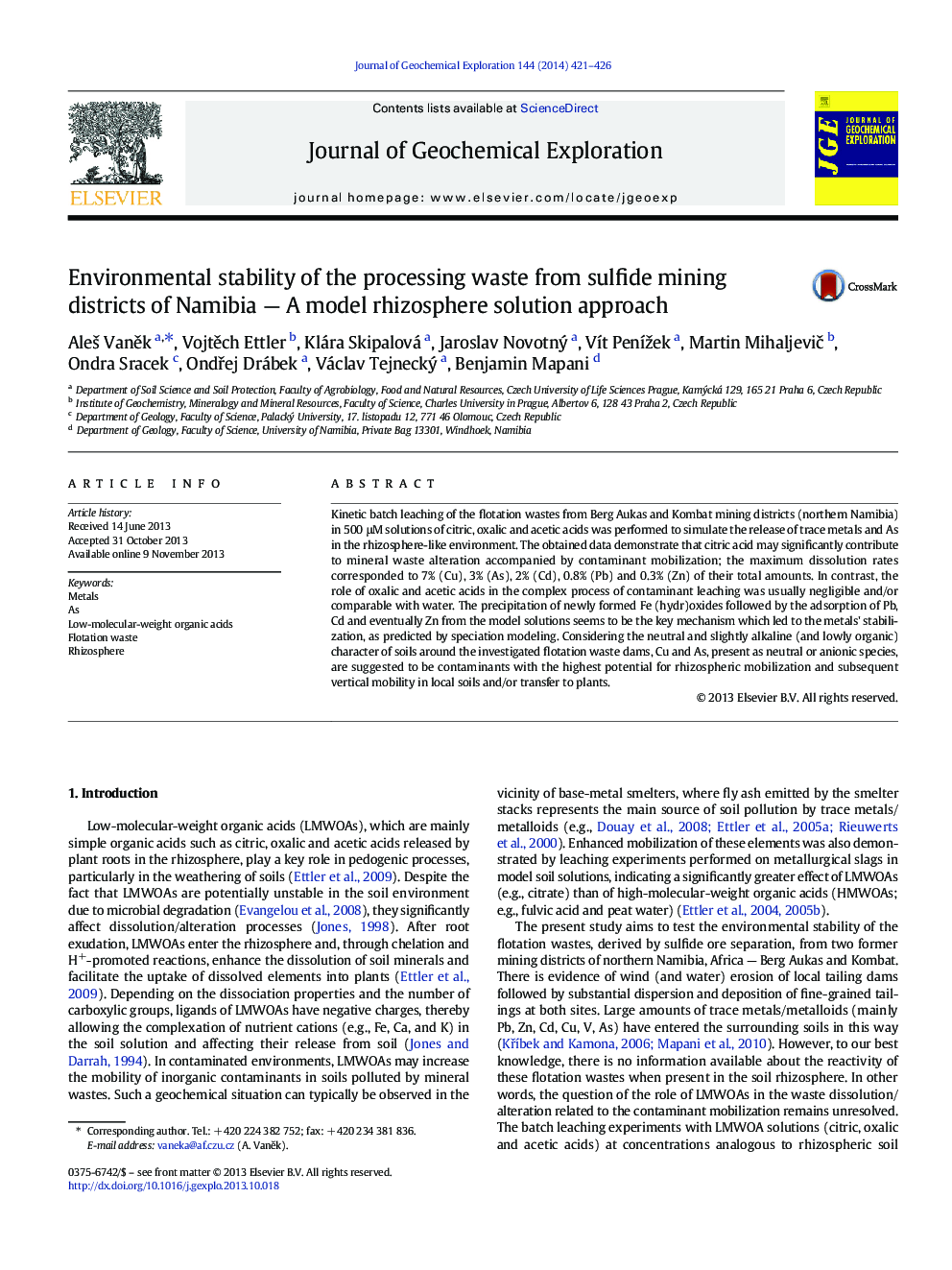| Article ID | Journal | Published Year | Pages | File Type |
|---|---|---|---|---|
| 4457290 | Journal of Geochemical Exploration | 2014 | 6 Pages |
•Citric acid significantly contributed to the flotation waste alteration.•The maximum dissolution rates were found for Cu and As.•The precipitation of Fe oxides led to metals' stabilization in LMWOA solutions.•Copper and As have the highest contaminant potential for rhizospheric mobilization.
Kinetic batch leaching of the flotation wastes from Berg Aukas and Kombat mining districts (northern Namibia) in 500 μM solutions of citric, oxalic and acetic acids was performed to simulate the release of trace metals and As in the rhizosphere-like environment. The obtained data demonstrate that citric acid may significantly contribute to mineral waste alteration accompanied by contaminant mobilization; the maximum dissolution rates corresponded to 7% (Cu), 3% (As), 2% (Cd), 0.8% (Pb) and 0.3% (Zn) of their total amounts. In contrast, the role of oxalic and acetic acids in the complex process of contaminant leaching was usually negligible and/or comparable with water. The precipitation of newly formed Fe (hydr)oxides followed by the adsorption of Pb, Cd and eventually Zn from the model solutions seems to be the key mechanism which led to the metals' stabilization, as predicted by speciation modeling. Considering the neutral and slightly alkaline (and lowly organic) character of soils around the investigated flotation waste dams, Cu and As, present as neutral or anionic species, are suggested to be contaminants with the highest potential for rhizospheric mobilization and subsequent vertical mobility in local soils and/or transfer to plants.
